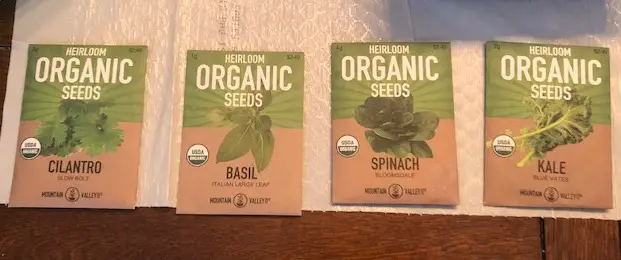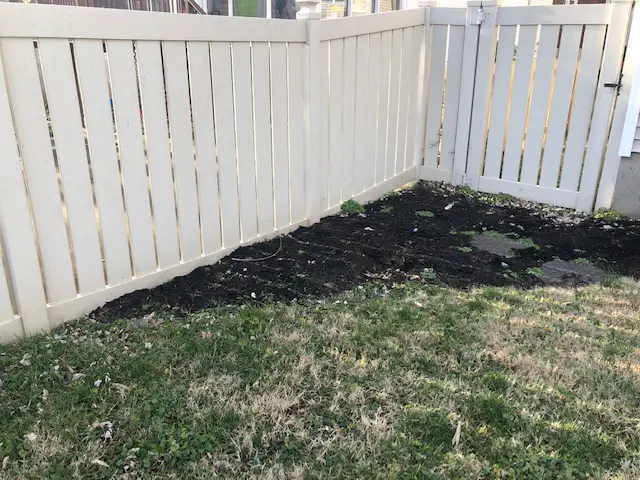Why start a home garden?
Despite having a very full life and precious little free time, I am going to start a home garden this year. I’m hesitant about taking on more responsibility at this stage of life; taking care of three little kids is as much as I can handle most days. Even so, I really want to garden.
I want quality vegetables right in my backyard. I love the idea of learning an old-fashioned hobby. We also spend quite a bit of cash on produce and might save money by growing vegetables. Gardening will get me outside in the dirt a few days a week and could give me time to clear my head.
My gardening know-how is negligible. The closest I’ve been to real gardening is watching my grandfather grow plants in his backyard as a kid. He spent summer evenings sitting in his backyard, overlooking his plants with a beer in hand. He’s passed away and how I wish he was here to teach me all that he knew about how to start a home garden!
In recent years, I have stuck a few plants in pots that I’ve picked up at our local garden store. Some lived, some were not so lucky.
My first step to start my home garden for this summer was to sit down and decide what should be in it.
What to grow?
I decided what to grow by thinking about what we eat. There’s no need to spend money, time, and energy growing something that’s not going to be eaten. We eat a lot of heirloom tomatoes in the summer so they were absolutely first on my list. I love making bruschetta, roasting them for pasta, and just eating them plain. I’d really love to do more with fresh tomatoes but find them so expensive that I don’t get past these basic few uses.
I also decided to grow kale and spinach. We eat quite a bit of both. Jill Winger shared in her podcast that heirloom greens are much more delicious than the ones in the grocery store which have been grown to maximize shelf-life, not taste. After hearing that, I really wanted to try some heirloom greens.
I love fresh herbs, especially basil and cilantro, and want to grow them. Right now, I don’t use many because I don’t like the added cost to my grocery bill and I have a hard time using a whole bunch. For everyday recipes, I often use dried herbs as a substitute. I think I’ll enjoy being able to take a little from a plant here and there.
Growing tomatoes, greens, and herbs seems like a great lineup to start a garden. I think it will provide enough food to be worth my while, but won’t be so much that I’ll be overwhelmed. I have to admit I was tempted to go hog-wild and grow so much more. I have an all-in personality and part of me would love to grow purple carrots, onions, potatoes, broccoli, and basically every other thing you can think of. I stopped myself. I’m not looking for a full-time job. I want gardening to be fun, not a burden. I’d rather start small and build it up year after year. Also, if it crashes and burns, it won’t be such a dramatic fire.
Heirloom Seeds
With list in hand, I started to hunt for heirloom seeds. Heirloom plants are not available at my local garden store, so I’ll have to sow the seeds myself.
While looking for heirloom seeds online, I learned a lot about what makes an heirloom so special. Heirlooms are plants that have been handed down from generation to generation of farmers for at least 50 years, are open-pollinated, and not genetically modified. Essentially, heirloom plants are the same ones that were grown before food was industrialized. When we talk about eating food that our great-grandparents ate, heirloom plants fit the bill.
I found several great purveyors of heirloom seeds and bought mine at True Leaf Market (not sponsored). I found their website easy to navigate and loved that they clearly label seed varieties as organic and heirloom. They had every variety I wanted in stock.

When looking at seeds, it’s helpful to know the length of the growing season in your area. This is super easy to determine, just search your location in the Farmer’s Almanac handy frost date calculator. According to the calculator, here in KY, our last frost in the spring is around April 10 and our first frost in the fall is around Oct. 30. The length of time between April 10 and Oct 30 is 202 days. This means that when I can transplant my seedlings outside, I’ll have 202-ish days to grow them before cold weather hits and ends our growing season.
Ok, so how is that helpful? When looking at a particular seed variety, you can determine if you have a long enough growing season to grow that plant to maturity. This is of particular concern if you live in colder climates, where summer is shorter. It would be a huge disappointment to start growing a plant and then have cold weather arrive before it matures and produces anything.
On each seed packet, there is a description of days to germinate, which is the number of days it takes seeds to sprout into tiny plants, and days to maturity, which is the number of days from transplant of seedlings in a garden to the day you harvest. My tomato seeds had the longest maturation length of the seeds I selected. They take 80 days to mature so that means that if I transplant after our last spring frost around April 10, I should have tomatoes by the end of June and until Oct. 25. This should be plenty of time to get great tomatoes!
Seeds and supplies I bought
Affiliate Information: I am a member of the Amazon Associates program and this post contains affiliate links, which means that if you buy something through one of the links here, I may receive payment at no additional cost to you. As an Amazon Associate, I earn from qualifying purchases.
After reading the descriptions and oohing and aahing at the pretty pictures, I settled on the following seed varieties from True Leaf Market (not sponsored):
Kale- Vates Blue Scotch Curled (Organic) 2g
Spinach- Bloomsdale Long Standing (Organic) 4g
Tomato- Chadwick Cherry (Organic) 250 mg
Tomato- Cherokee Purple (Organic) 250 mg
Tomato- Hillbilly (Organic) 250 mg
Basil- Italian Large Leaf (Organic) 1g
Cilantro- Slow Bolt (Organic) 3g
Each packet cost $2.49 and my total plus shipping was $21.93. Not bad!

I also ordered these seed trays (affiliate link). They had great reviews and were inexpensive enough ($17.99).
Mark the calendar
Each seed packet gives instructions on when to sow seeds indoors in relation to the last frost in the spring, April 10 for me. The varieties of tomatoes I chose recommend sowing indoors 6-8 weeks before the first frost, so I made a note on my calendar to plant the seeds in late February. I plan to sow the herbs and greens a little earlier, hopefully around mid-February.
To see the subsequent post to this one visit Starting a Home Garden, Phase 2: Sowing Seeds.
Disclaimer: The information published in this blog is for entertainment purposes only. I am not an expert and you should look elsewhere for advice. I am not liable for any damages resulting from using the information on this blog. All activities for children should be done with adult supervision.
Affiliate Information: I am a member of the Amazon Associates program and this post contains affiliate links, which means that if you buy something through one of the links here, I may receive payment at no additional cost to you. As an Amazon Associate, I earn from qualifying purchases.
One reply on “Start a Home Garden, Phase 1: Make a Plan & Buy Seeds”
[…] out my other posts, Starting a home garden, Phase 1: Making a Plan and Starting a home garden, Phase 2: Planting […]